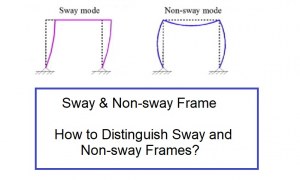🕑 Reading time: 1 minute
The sheathing ducts are used in Pre and Post tension of concrete members to create a void in the concrete, through which the cables/tendons are inserted and remain free to stretch during stressing operation.
The sheathing ducts are available in two varieties, namely: metallic and HDPE.
In this article, we discuss the tests carried out on the metallic sheathing ducts to determine the workability, transverse load, tensile load and water loss.

Metallic Sheathing ducts are manufactured, by rolling CRCA Steel Strips with a spiral corrugation throughout its length. These corrugations provide better bonding with the concrete from outside and the cement grout from inside.
1. Workability Test

- A sheeting duct of length 1100mm is fixed to a base plate on the testing instrument using a soft soldering method as shown in the fig: 2
- The duct is fastened with a cable or wire and pulled through a pully fixed on both sides of the instrument 1m apart from the center.
- The sheathing duct is pulled up to a radius of 1800mm on both sides alternatively.
- The bending process is carried out 3 times.
- The sealing joints of the duct are visually inspected to verify that no failure/opening has taken place.
- If the opening is observed in the duct, the sample is deemed to be failed.


2. Transverse Load Rating Test


- A test sample of sheathing duct of size 500mm is measured for the outer diameter and noted down as D1.
- The sample is placed on the stand which supports the duct.
- A loading plate is then placed in the center of the sample having a contact surface if 12mm long,
- Then the load are added on the loading plate as per the diameter of the duct as shown as in Table No- 1
- The loads are added evenly and at the center of two corrugations.
- The deformation formed in the duct due to loading is measured for the outer diameter D2.
- The sample is considered acceptable if the permanent deformation is less than 5% of the diameter of the sheathing.
Table No 1: Transverse Load Rating Test
| Diameter of the Duct in mm | 25-35 | 35-45 | 45-55 | 55-65 | 65-75 | 75-85 | 85-90 |
| Load in N | 250 | 400 | 500 | 600 | 700 | 800 | 1000 |



3. Tension Load Test

- A test specimen is subjected to a tensile load.
- The bellow core is filled with a wooden circular piece having a diameter of 95% of the inner dia of the sample to ensure a circular profile during test loading.
- A coupler is screwed on and the sample loaded in increments, till reaching the load specified in Table 2.
- If no deformation of the joints nor slippage of couplers is noticed.
the test shall be considered satisfactory.
Table No 2: Tensile Load Test
| Diameter of the Duct in mm | 25-35 | 35-45 | 45-55 | 55-65 | 65-75 | 75-85 | 85-90 |
| Load in N | 300 | 500 | 800 | 1100 | 1400 | 1600 | 1800 |

4. Water Loss Test
- The sample is sealed at one end and filled with water.
- Another end is connected to a system capable of applying a pressure of 0.05 MPa.
- Constant of 0.05MPa of pressure is maintained for 5 minutes using a hand pump with a pressure gauge.
- The water coming out of the duct is collected and measured.
- The sample is acceptable if the water loss does not exceed 1.5% of the volume of the initial water-filled.

Read More:
1. Post Tension Slab – Working Principle, Components and Construction
2. Types of Prestressing Systems and Anchorages in Prestressed Concrete


